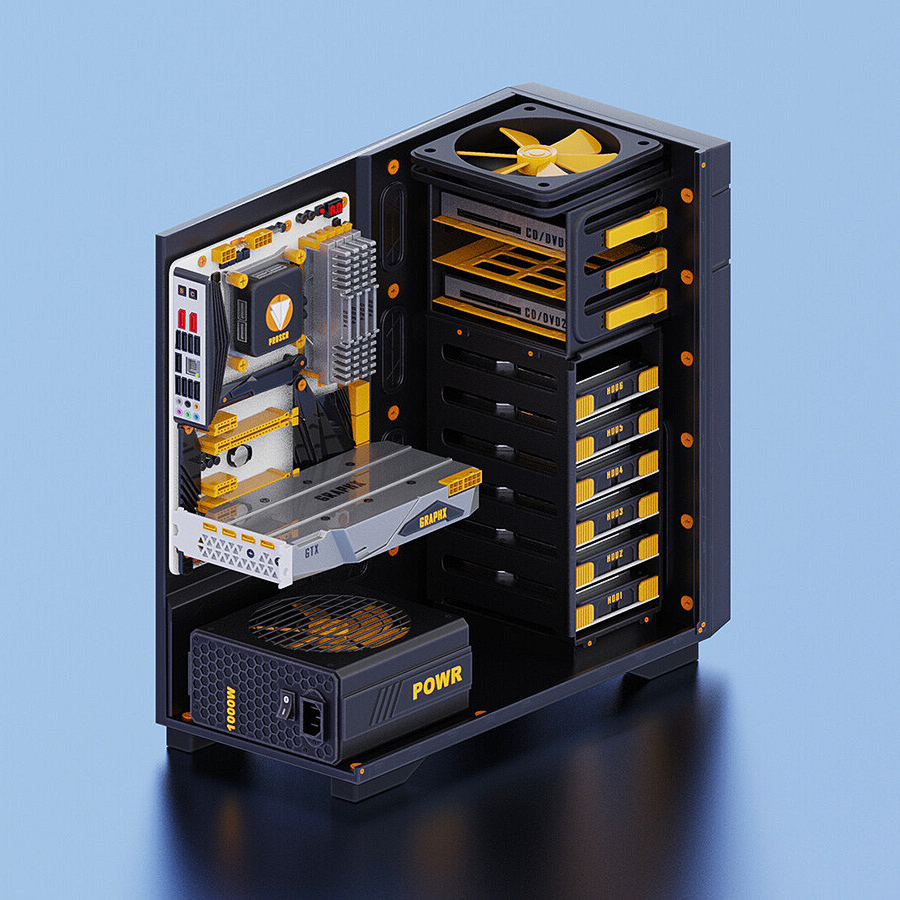I’m waiting on a standoff kit to come in the mail, as this is my next troubleshooting step
I bought this SSD to fit into a thin client. I am new to stick drives so I think it’s correct that I can only insert it one way due to the M-key (my port only has one divider, unlike the memory stick).
I don’t have a standoff so the stick is in but at a slight angle.
The PC has no operating system yet so is it correct that a blank drive should show up in the BIOS at least? It shows the m.2 slot as being empty currently. Or is it potentially readable as is, but needs something on it to format it?
The plan is to chuck Debian on it to boot into, via a thumb drive, but I wanted to make sure it was at least installed correctly (I mean, it isn’t because it should have a standoff).
If when my standoff kit arrives, the drive still doesn’t show in the BIOS what would you recommend I do next?
EDIT: thank you so much for the advice so far! I added a standoff and I can now see 500Gb in the BIOS. Truthfully it might have already been recognised, there is a section for M.2 in the BIOS which was reading empty but it also lists primary hard drive and it’s showing up there. Now to install me some Debian
If it doesn’t show up in the BIOS you won’t see it during installation. The BIOS also won’t care if the drive is partitioned, formatted or whatever.
Thanks that’s what I wanted to confirm, so it’s not in correctly
Check out this webpage and the pictures: https://www.atpinc.com/blog/what-is-m.2-M-B-BM-key-socket-3
I’m pretty sure you bought an M.2 SATA stick, not an mSATA stick.
You might need to double check that the M.2 slot of your motherboard supports SATA. It might be NVME only.
You might need to double check that the M.2 slot of your motherboard supports SATA. It might be NVME only.
This is most likely the problem.
The manual says its sata
Thanks, yes sorry post title corrected. Mine is m.2 SATA, not mSATA. But it’s the correct style for my device.
Sounds like it is probably not seated properly so hopefully it will be recognised once the correct standoff is holding it at the right angle
Usually they insert at a slight angle (maybe 30 degrees or so) then once in they push down (easily, shouldn’t have resistance) and you put the little screw in to hold it down.
don’t try to power on the system, even for ‘testing’, without the m2 card properly slotted and secured.
are you certain that the slot is m-key? see this page for help identifying b and m keys.
if it is m-key, are you also certain that the system supports sata via that m2 slot? sata support via m-key m2 is system dependent and not guaranteed to be there. the usual upgrade for m-key m2 is nvme ssd.
if your slot is actually “mSATA” (not “m2” or more accurately, “m.2”) you need an entirely different ssd card.
Can you post a picture of how it’s “not seated correctly”? It should show up in the bios even with nothing on it.
Yes, thank you. Assuming this works, see the dodgy angle that it currently has


Dodgy angle and all, that looks serviceable.
I’ve loosened the screw a bit. I’ll try it again tomorrow but yeah. The thin client sees the RAM I installed fine but nothing here and I thought I’d popped it in correctly. I’ll remove and reseat and try again
there may be a setting in the bios to configure the mode the storage device(s) use. it may simply be expecting nvme and not even looking for ahci sata.
Yeah, there is a hynix chip underneath, and it might be looking at onboard storage only for some reason.
you are missing a spacer there that holds it up higher, it isn’t meant to flex down like that.
what model of thin client or board is it you are putting this drive in? I’m not convinced this drive even belongs in that slot.
It’s a dell wyse 5070
ok it is definitely m2 sata and not nvme according to the manual, yet the only picture I found was nvme. seatching known parts also yielded sata only results, so I am confident it is.
I’m not sure why your specific ssd isn’t detected, I see some oneline posts claiming larger ones are a problem, but I was able to find some working just fine all the way to 2TB.
For that missing standoff, standard mainboard standoffs have the right hight to replace the missing one but might bot thread in correctly. A possible work ared is to find some small nuts to use with a longer screw. As long as the screw threads properly in the screw hole it’d be fine

Thanks for this. Hopefully putting a standoff in will get it reading. I will find out tomorrow!
That looks fine. Can you back the screw off at all so you’re flexing the board less, without it popping out?
Are you sure that drive is even supported? That slot looks like an NVMe slot. Notice how there’s no plastic bump in the socket on the left of the drive. And there are pins in that slot area that are not touching any contacts on your drive.
I imagine some motherboards will support both SSD and NVMe, but if it supports NVMe, you want an NVMe drive. They are much faster. And since you said you can’t see the drive in BIOS, your motherboard very likely only supports NVMe.
Ironically I accidentally ordered an NVMe drive before this and that wasn’t recognised either. Per the internet you need an adaptor to put an NVMe drive in to the Wi-Fi slot, but that’s a different slot to this one unless I’ve completely banjaxxxed this
Double-check what your thin client motherboard is compatible with. Your post title says mSATA, but you linked to a M.2 that you bought, they’re a bit different and are not interchangable AFAIK.
e.g. maybe this helps https://www.kingston.com/en/blog/pc-performance/ssd-form-factors
In any case the BIOS should show that something is plugged in once you have it plugged in correctly.
What model thin client and drive are you using?
It’s a dell wyse 5070 and the drive is in the main post
Double check in the bios that the appropriate onboard controllers are enabled. If the slot was being used as nvme, the onboard sata might be disabled.





